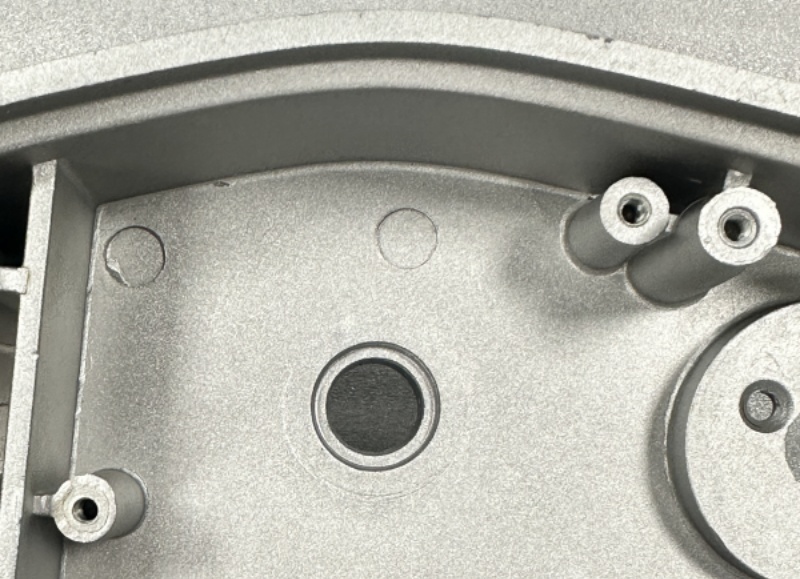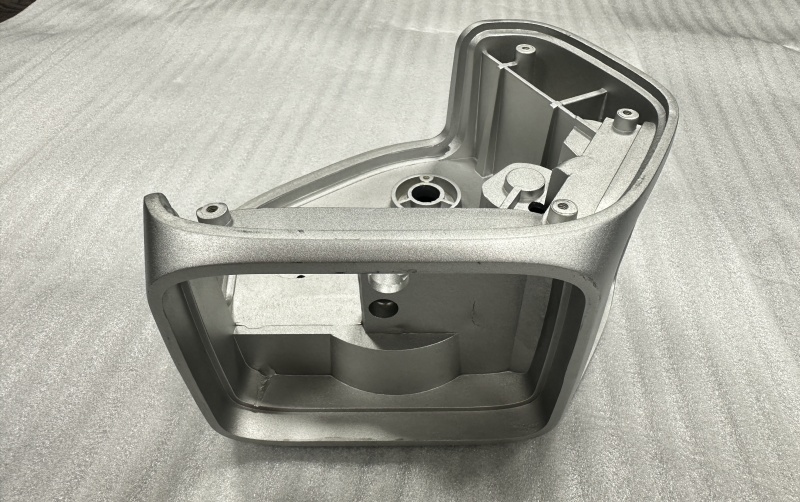Metal stamping is a manufacturing process in which metal is placed into a specific shape in a machine. It is mainly used for metals such as sheets and coils, and is suitable for producing high-precision products.Stamping encompasses multiple forming techniques such as blanking, punching, embossing, and progressive die stamping, to mention just a few.
As a professional metal processing manufacturer, Ruicheng has more than ten years of metal processing experience. We can design and process based on the 3D drawings you provide, and we can also help you confirm what post-processing your product requires.Our professional knowledge and technology allow you to achieve the best results during product design and production, and avoid the pitfalls of metal forming. This article main outlines top design standards to ensure your parts perform the best while avoiding high costs.
Common step of metal stamping
Coining
coining is also called metal coining is a form of precision stamping, the mold will be push by machine to make metal exposes high levels of stress and pressure. A beneficial point is that process will generates a plasticized flow of material, so the workpiece has smoother surfaces and edges to close tolerances of the design.
Blanking
blanking is a shearing processes which often converts a large, generic sheet of metal into smaller forms. After blanking workpiece will be more easy to further bending and processing. During blanking processes, machinery might cut the sheet with high-speed dies utilizing long strokes through the metal or have dies that cut out specific shapes.
Bends and Forms
Bends often come towards the end of die stamping processes. Material grain direction is a crucial consideration to make when it comes to bent features. When the material’s grain is in the same direction as a bend, it is prone to cracking, especially on high-strength materials such as stainless steel alloys or tempered materials. Designer will bends against the material’s grain for the best results, and note grain direction on your drawing.
Punching
This process is pushing a punch through a metal by press from to leave behind a hole with a precise shape and placement. The punching tool often completely separates the excess material from the newly created form. Punching can occur with or without shear.
Embossing
Embossing processes is create raised characters or designs logo on a stamped workpiece for a tactile finish. The workpiece typically passes between male and female dies, which deform specific lines of the workpiece into the new shape.
Dimensions and Tolerancing
For formed features, designers should always give dimensions to the inside of the product. Tolerancing of features placed on the outer end of a form should take angular tolerance of the bend-typically±1 degree-and the distance from the bend into account. When a feature contains multiple bends, we will also account for tolerance stack-up.For more information, see our article about geometric tolerances.
Metal Stamping Design Considerations
Holes and Slots
In metal stamping,holes and slots is made by via piercing techniques that use stell tools. During the process, the punch compresses a sheet or strip of metal against the opening of a die. when it start, material will be cut through and shear by punch. The result is a hole with a burnished wall on the top face that tapers out towards the bottom, leaving a burr where the material has broken away. By the nature of this process, holes and slots will not be perfectly straight. But the walls can be made uniform by using secondary machining operations; however, these can add some cost.

Bend Radius
Sometime the workpiece need to bend to meet product function, but notice the material must generally bend in a single orientation, and the inside bend radius should equal the sheet thickness at a minimum.
Material needs and Characteristics
Different metals and alloys have different attributes, including different degrees of resistance to bending, strength, formability, and weight. Some metals will respond better to design specifications than others;
but it need designer need a certain degree of professionalism. In this point, we can give you promise that we have professional team, they will take the advantages and limitations of their chosen metal into consideration.
Tolerances
before the project start our designer team will determine the acceptable tolerance with you. Because achievable tolerances will vary based on the metal type, the design demands, and the machining tools used.
Wall thickness
Product's thickness is very easy to overlook a critical point in the metal stamping process, usually consistent wall thickness throughout a product is typically ideal. If a part has walls with different thicknesses, then it will be subject to different bending effects, resulting in deformation or falling outside of your project's tolerances.

Possible Defects And How to Avoid Them
Some of the most common defeats in metal stamping products are:
Burrs
Sharp raised edges or rolls of excess metal along stamping edges caused by the clearance between punch and die. Deburring secondary operations are required. Prevent by precision grinding punches/dies for clearance control.
Bending broken
Parts with dramatic bends are particularly vulnerable to cracks, especially if they’re made from stiff metals with little plasticity. If the bend is parallel to the grain direction of the metal, it could form long cracks along the bend.
Scrap Web
Excess metal remnants between parts along shear edges from worn, chipped, or poorly aligned die. When this problem arises you can Realign, sharpen, or replace tooling. Enlarge punch-to-die clearance.
Springback
Partially released stresses cause stamped forms to spring back slightly after removal. You can try to manage by over-bending and applying bend compensation.
Choose Precision Metal Stamping Services From RuiCheng Manufacturer
Xiamen Ruicheng make all its manufacturing work under a very high standard, who is committed to providing an excellent service: from rapid quote, produce high-quality products with reasonable price to in-time shipment arrangement. Our engineering and production teams have the experience and skill to tackle your project, no matter how complex, all at an affordable cost. JUST CONTACT US!
Post time: Apr-18-2024
